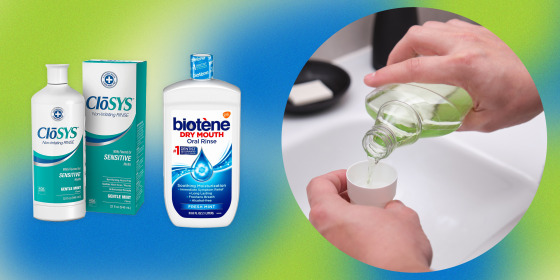

Rinsing with a mouthwash can give your mouth a cool, fresh feeling, but how important is it? Does it really lead to better health outcomes for your teeth and gums, and is it as important as toothpaste and floss? Overwhelmingly, yes, according to the dentists we spoke to.
There are two different kinds of mouthwash: cosmetic, which masks bad breath, and therapeutic, which serves clinical purposes like attacking bacteria or plaque. “When used correctly,” explains Dr. Sheri Doniger, an Illinois-based dentist, “therapeutic mouthwashes have been clinically effective in reducing dental biofilm accumulation,” as well as treating halitosis and periodontal diseases, such as gingivitis and periodontitis.
To help you find mouthwash that fits your needs, we talked to Doniger and other experts about which ingredients matter most, and for whom. We focused on six therapeutic mouthwashes in this guide, because of their tangible health benefits.
Each expert we spoke to recommended buying a mouthwash with the ADA Seal of Acceptance. “You can’t go wrong” with an ADA Seal mouthwash, said Dr. Edmond Hewlett, a professor at the UCLA School of Dentistry, because they’ve been “scientifically evaluated to be effective.” They also noted that your dentist can help the best mouthwash for your needs.
As for cosmetic vs. therapeutic mouthwashes, cosmetic mouthwashes “may temporarily control bad breath and leave behind a pleasant taste, but have no chemical or biological application beyond their temporary benefit,” according to the ADA. They may be a great option after a particularly garlicky meal, but they won’t fight the root causes of periodontal disease, like plaque or gingivitis.
On the other hand, therapeutic mouthwashes, which we recommend below, have active ingredients that can kill bacteria, control plaque or bad breath, provide more fluoride to the teeth and otherwise help improve dental health.
Here are some common ingredients that experts we spoke to highlighted, and how they can help improve dental health:
Cetylpyridinium chloride, or CPC, is found in mouthwashes as an antiseptic ingredient — Doniger told us it “kills bacteria by reducing plaque accumulation and gingival inflammation.” CPC is part of a class of compounds found in many household cleaners, like detergents and disinfectant sprays, according to Hewlett.
Sodium fluoride: Fluorinated mouthwashes can help “decrease oral decay, strengthen tooth enamel and increase enamel remineralization,” Doniger said. The active ingredient, sodium fluoride, is a common ingredient in toothpaste, but you can find it in mouthwashes too.
Chlorine dioxide is an ingredient used for halitosis (bad breath), since it can reduce mouth bacteria that produce sulfur, according to Doniger.
Menthol, eucalyptol and thymol are derived from various plants and essential oils. These ingredients contribute to the minty fresh flavor that people like in their mouthwashes, but also have some antiseptic properties too, Hewlett says.
Alcohol is an astringent, so it draws out moisture, which Hewlett says can provide an extra clean feeling in your mouth.
Hydrogen peroxide is an oxygenating ingredient that can help with “wound healing and decreasing inflammation from periodontal disease or an infection around the crown of the tooth,” Doniger told us. Hydrogen peroxide can also have a whitening effect on the teeth, but Hewlett says that the impact is minimal since the concentration is low in these mouthwashes.
You can read more about mouthwashes on the ADA website.